
Historic West Las Vegas

Las Vegas Grammar School. Listed on the National Register of Historic Places, the Nevada State Register of Historic Places, and City of Las Vegas Historic Property Register.
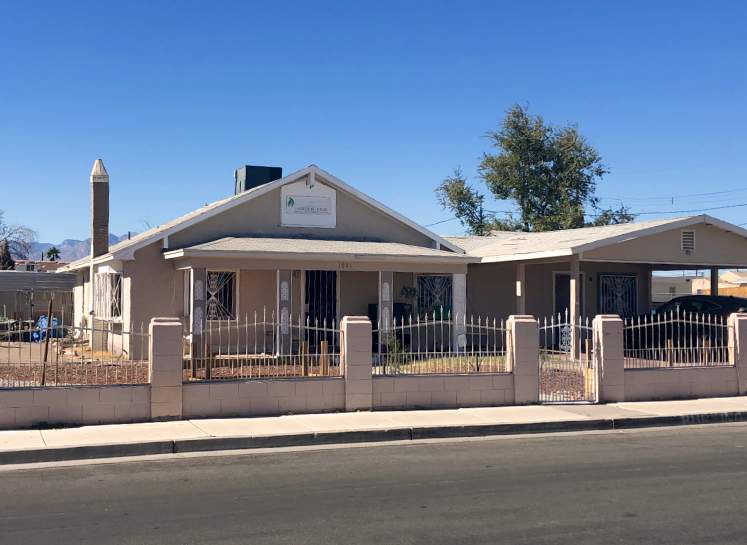
Harrison's Guest House. Listed on the National Register of Historic Places, the Nevada State Register of Historic Places, and City of Las Vegas Historic Property Register.

Berkley Square. Listed on the National Register of Historic Places.
Marble Manor
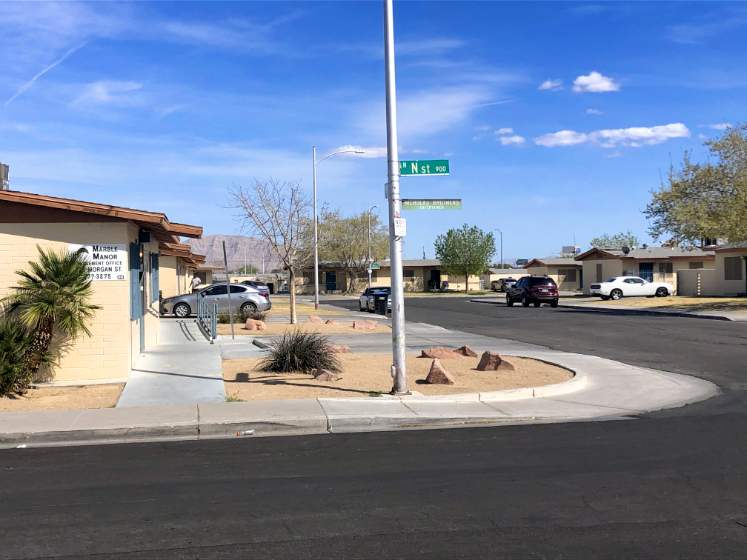
Phases built in 1952, 1958, 1962. Bounded by: West Washington Avenue, H Street, W McWilliams Avenue, N Street.
Jackson Street

Located on Jackson Avenue from F Street to D Street.
McWilliams’ Townsite
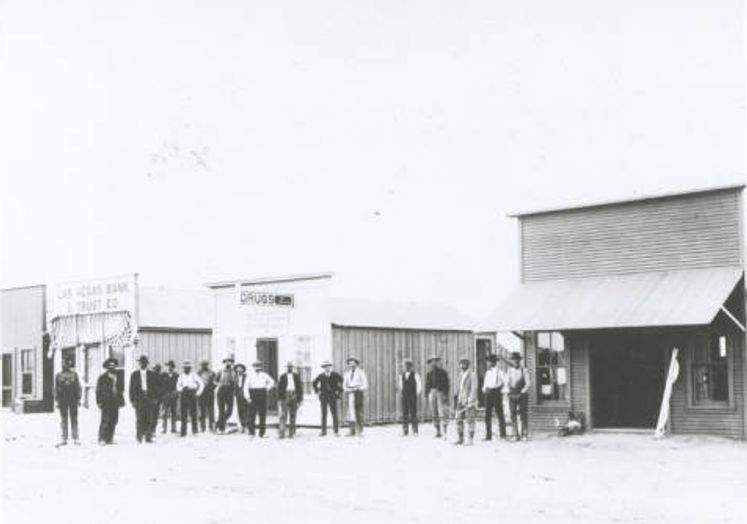
Photograph of a group of men outside businesses in the McWilliams' Townsite, Las Vegas (Nev.), 1905. Helen J. Stewart Collection. UNLV Libraries Special Collections & Archives.
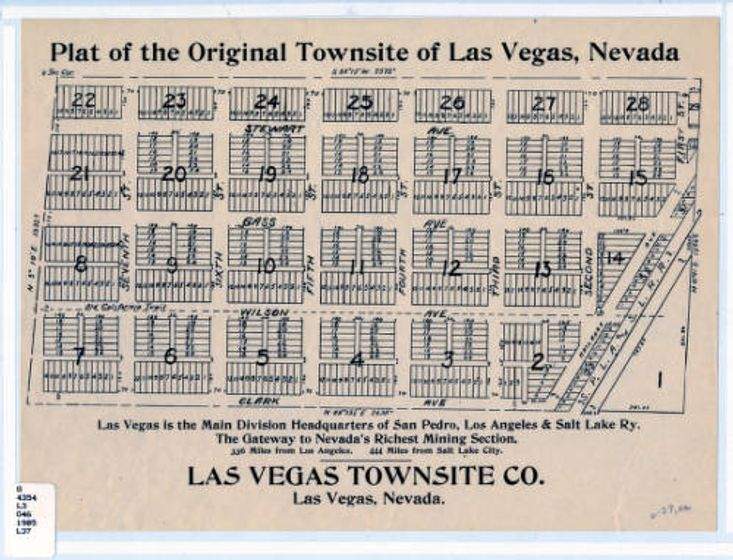
Plat map of the Original Townsite of Las Vegas (Nev.), 1903. Southern Nevada The Boomtown Years. UNLV Libraries Special Collections & Archives.
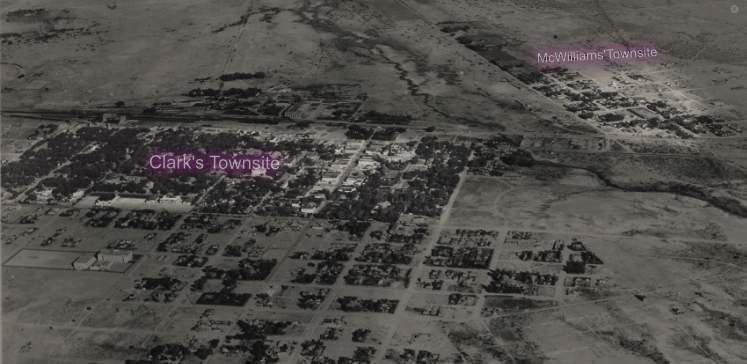
Aerial photograph of Las Vegas looking west, 1930. Ray Cutright Collection. UNLV Libraries Special Collections & Archives. Cropping and text layers added to original by The Historic Las Vegas Project.
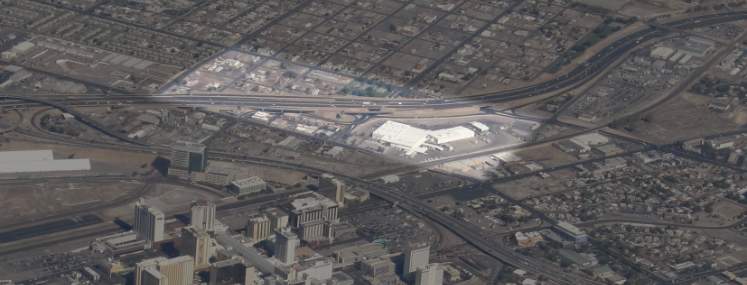
Located within present-day: A Street, West Bonanza Road, H Street, West Washington Avenue.
This work, "McWilliams' Las Vegas Townsite", is a derivative of "Downtown Las Vegas, Nevada" by Ken Lund, used under CC BY-SA 2.0.
"McWilliams' Las Vegas Townsite" is licensed under CC BY-SA 2.0 by The Historic Las Vegas Project.

McWilliams home. Built in 1904. Destroyed by a fire. Was located at 222 West Wilson Avenue, Las Vegas, Nevada.
Photograph of McWilliams' home, Las Vegas (Nev.), May 23, 1980 . Fayle Family Photographs. UNLV Libraries Special Collections & Archives.
"Among the early pioneers who contributed to early Las Vegas in 1905, several Black People began to make their way to the new town. These Black people began to grow the "colored colony" at the site called Block 17, where The Mob Museum is currently located.
Most Black people came to Las Vegas in search of work, particularly on the new Railroad. Others owned and operated successful businesses such as small food venues, bars, boarding houses, a shoe shine stand, and a barbershop.
As Las Vegas and the downtown area east of the railroad continued to grow and as more individuals came from various parts of the country, in many cases carrying racial attitudes with them. Black residents found themselves increasingly segregated against and were forced west "across the tracks" to an area known as McWilliams Townsite. Black people owned a significant amount of land in the downtown area before being forced to relocate."
(Historic Westside Legacy Park)
"Commerce on the Westside was short lived, collapsing in 1905 when rival Las Vegas Townsite opened on the east side of the railroad tracks. In 1942, the Westside defined a new commercial district to serve the ethnic population of the area.
The new zone, locally known as "Jackson Street," covered two blocks, from D to F Streets along Jackson and Van Buren. In July 1942, permit requests on file included a grocery store, barbershop, beauty shop, recreation center, restaurant, drug store and gas station. Las Vegas was a segregated town by then, and Westside residents needed mundane services as well as places to recreate.
Shows and performers lit up the district in the late night hours. Numerous bars and hotels opened here: Carver House (later the Cove), Hotel Jackson, Harlem Club, Ebony Club, Cotton Club, Brown Derby, El Morocco, Louisiana Club and many more. Whites and blacks mingled here in a lively atmosphere. Black professionals opened offices on the Westside, and dozens of churches took root.
In 1960 civil rights activists finally succeeded in breaking down restrictions that kept blacks out of Las Vegas casinos, and many people chose to spend their time and money outside the neighborhood. Ironically, the civil rights victory caused Westside commerce to decline. Many small businesses here closed. Shuttered buildings and empty lots give no clue to the vibrant life that once existed here. The New Town Tavern at Jackson and F streets is the sole survivor of this exciting time."
(Las Vegas Pioneer Trail Marker 9)
"One aspect of the physical segregation of West Las Vegas was the development of a vibrant and self contained community with all of the businesses and services the residents needed.
In many ways Jackson Commercial District was the economic lifeblood of the Westside community. From small businesses like dry cleaners, restaurants, barbershops, and beauty shops to entertainment venues like the Town Tavern, Louisiana Club, the Cotton Club, Brown Derby, and others. Jackson Street offered a diverse collection of services.
With the broader city leaving the westside to its own devices, zoning was not enforced. Many of the residents in the neighborhood operated businesses and boarding spaces on the same property as their homes, engaging in the "live/work" trend long before its popularity in our current time."
(Westside Legacy Park)
"Created by J.T. McWilliams in 1905, the Original Las Vegas Townsite was Las Vegas' first business and residential development.
J.T. McWilliams was hired to do survey work in and around the Las Vegas Valley for the San Pedro, Los Angeles and Salt Lake Railroad in 1904, and later platted a townsite west of the railroad tracks. Located along the wagon road between Salt Lake City and Los Angeles, the townsite became home to roughly 1,500 people who worked at nearby mines and other businesses. By 1905 there were numerous stores, bars, freighting companies, banks and a bakery.
Under direction of the owner, former Montana Senator William A. Clark, the railroad platted a townsite across the tracks to the south and east of McWilliams' Townsite. Wanting to control development, the railroad's land auction was held on May 15, 1905, threatening the future of the original townsite. Immediately after the auction, many businesses abandoned the area for the new Las Vegas Townsite. McWilliams' Townsite languished until four months later a fire destroyed much of the area.
Lacking basic amenities until the 1940s such as paved streets and a sewer system, the townsite never fully recovered to its glory days. Later additions expanded the "Westside," offering affordable housing for people who came to Las Vegas to build Hoover Dam, Henderson's Basic Magnesium Plant, or work in the hotels. Industrial development and a freeway have eliminated all but roughly half of the original townsite."
(Las Vegas Pioneer Trail Marker 6)
Roughly bounded by: West Bonanza Road, Martin Luther King Boulevard, West Carey Avenue, Interstate 15.